- Home
- US Penny Guide
United States One Cent Coin
The United States one cent coin has seen many changes over the last 200 years or so and is commonly referred to as a Penny.
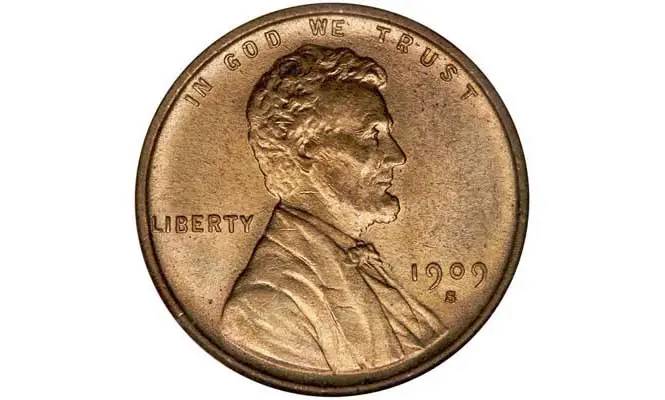
Image Courtesy Of Heritage Auctions
It was first minted in 1787 in the form of the Fugio Cent and is equivalent to 100th of an US Dollar.
Over the years the cent has evolved from being a larger type Flowing Hair Chain at around 26.5 mm and weighing 13.48 grams to a smaller version of 19 mm and 2.5 grams which is known as the Lincoln Union Shield Cent.
Fugio Cent 1787
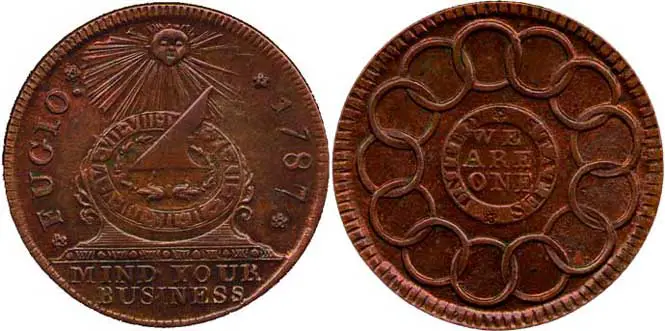
Image Source
This, 10.2 grams, copper coin is the first official one cent piece of the United States of America, which at the time only had 13 states.
It was designed by Benjamin Franklin with a sun dial on one side and a 13 link chain on the other.
Due to its famous designer, it was also known as the Franklin Cent.
Flowing Hair Chain 1793
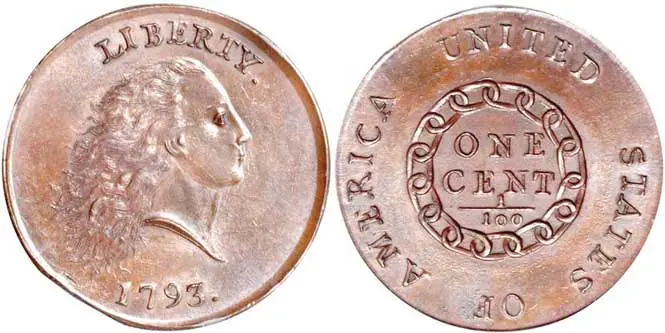
Image Source
Known mostly as the Chain Cent, this was the first large cent in the United States.
It got the name Flowing Hair Chain after the long flowing hair of Lady Liberty on the obverse and the chain representing the 15 states (at the time) of the United States of America on the reverse.
It weighed 13.24 grams, was made of 100% copper and was 26-27 mm in diameter.
There were around 36,103 struck in late February 1793 and only about 1000 exist today. Consequently they are popular with coin collectors and can change hands for thousands of dollars.
Flowing Hair Wreath 1793
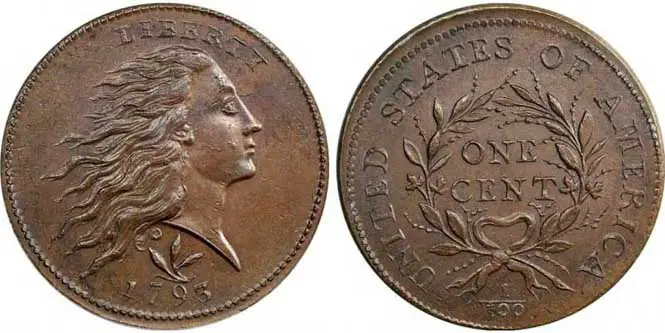
Image Source
Another large cent produced in 1793 was the Wreath Cent after public criticism against the Chain Cent.
The obverse is very much similar to the Chain with Lady Liberty's hair flowing gently in the wind, except less shock-like.
The reverse is a wreath instead of a chain after some people suggested the previous coin's design represented slavery.
There were approximately 63,353 Wreath Cent's struck that year in a number of different versions and they are also well sought after by collectors.
A version named 'Strawberry Leaf' sold in 2004 at auction for $414,000.
Liberty Cap 1793–1796
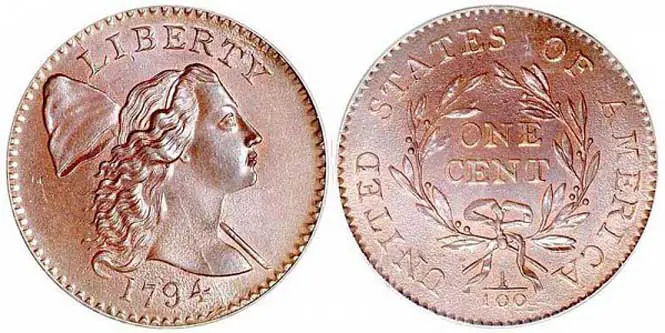
Image Source
The Liberty Cap was the next large copper cent to be produced by the United States Mint.
It was designed by Joseph Wright and many different varieties were produced during the three years it was being minted.
This was due to differences in the individual dies that were being used to produce the coin.
On the obverse there is an image of Liberty with her Phrygian cap (not a hair bow as some people thought) and on the reverse, a laurel wreath similar to the previous Wreath Cent.
These large cent coins were minted in 1793, 1794, 1795 and 1796.
Draped Bust 1796–1807
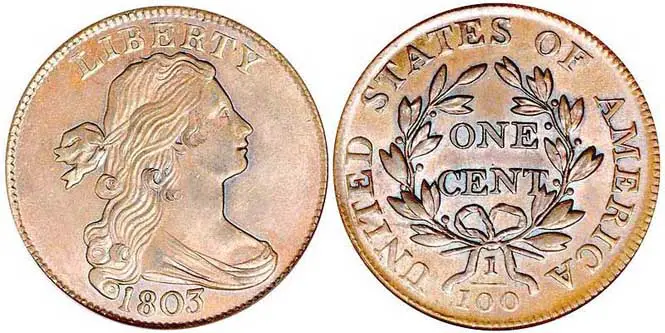
Image Source
The Draped Bust was another new design for the large copper US cent and was slightly lighter than before at 10.89 grams.
It was designed by Robert Scot and featured the usual image of Liberty on the observe, only this time she is wearing a neckline drapery and a ribbon in her hair.
The reverse of the coin features an olive wreath with One Cent written in the center.
These coins were minted in 1796, 1797, 1798, 1799, 1800, 1801, 1802, 1803, 1804, 1805, 1806 and 1807.
Classic Head 1808–1814
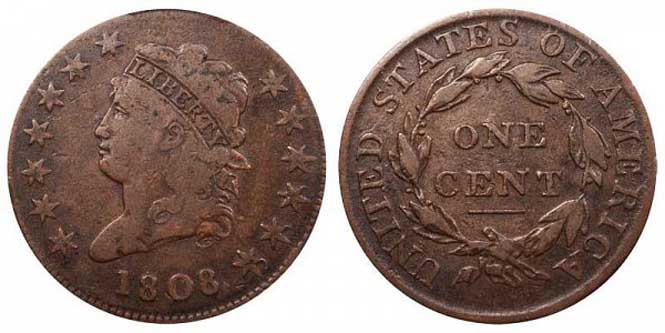
Image Source
The Classic Head US cent was the next generation of large copper pennies to be produced by the United States Mint.
It was designed by John Reich who was the assistant of the previous designer Robert Scot and his design features Liberty's bust facing left.
Still made from 100% copper and weighing 10.89 grams, this coin got its name from the band around Liberty's head on the obverse.
It was a strange addition to the design as these headbands, known as fillets, were only worn by males athletes from Greece.
The reverse still carries an image of the olive wreath.
These coins had a few variations to the design and were minted in 1808, 1809, 1810, 1811, 1812, 1813 and 1814.
Coronet 1816–1839
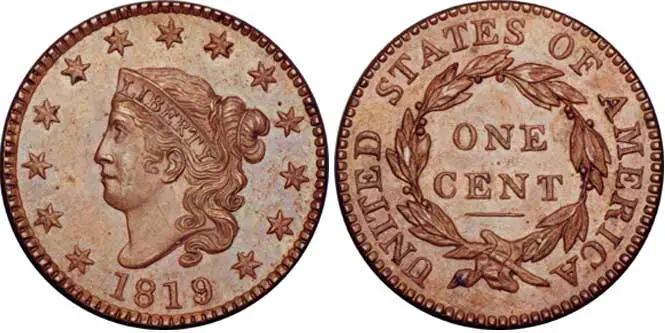
Image Source
Braided Hair 1839–1857, 1868
Flying Eagle 1856–1858
Indian Head 1859–1909
Lincoln Wheat 1909-1958
Lincoln Memorial 1959–2008
Lincoln Bicentennial 4 reverse designs 2009
Lincoln Union Shield 2010–present
Return to Lost Treasure HQ from United States One Cent
